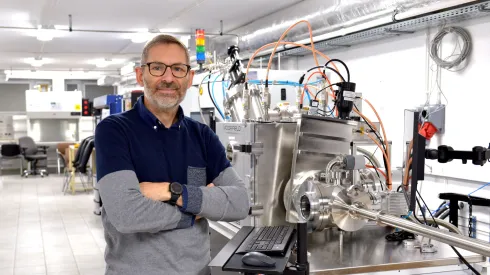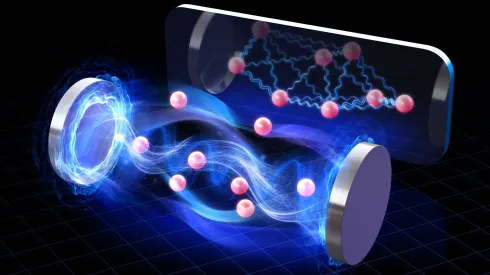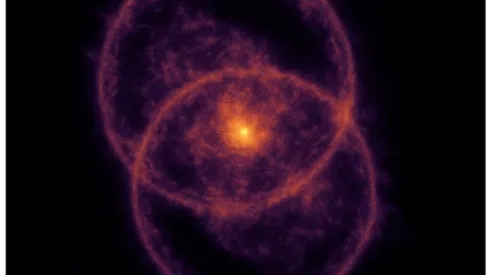
Scientists find ‘twisted metallic magnet’ could transform spintronics and electronics
A metallic “twisted” magnet conducts electricity more easily in certain directions and generates a strong signal without an external field, an international team including Kamil Kolincio, PhD, from the Gdańsk University of Technology has found.
-

Polish scientists develop dual-use nanopowders for military and civilian use
Nanopowders and other dual-use technologies that can serve both civilian and military purposes, including materials that “remember” radiation and temperature and antibacterial coatings, are being developed by scientists at the Institute of Physics of the Polish Academy of Sciences.
-

Researchers in Poland create new materials for printable OLED displays
Researchers from Toruń, Kraków and Bydgoszcz have developed new benzimidazole-based compounds that could make the production of OLED displays faster and cheaper. Their findings, published in the Journal of Molecular Structure, show that the materials can be used to create light-emitting layers through solution processing, a method similar to inkjet printing.
-

Gdańsk Tech scientists working on material that could ‘revolutionize’ energy storage
Scientists at Gdańsk University of Technology are exploring a new way to store and release electricity using a material that combines the properties of diamond and graphene.
-

Polish scientists ‘season’ magnetite to create glow-in-the-dark, antimicrobial material
Scientists in Poland have discovered a way to give a familiar mineral new talents by “seasoning” it. A team at the University of Białystok has been experimenting with magnetite, a cheap and well-known iron oxide, by adding tiny amounts of metals to create materials that can glow and slow the growth of bacteria and fungi.
-

Polish and Austrian scientists develop new model to study high-energy quantum photons
Scientists from Poland and Austria have created a new computer model for studying quantum phenomena involving high-energy photons which could help test the foundations of quantum mechanics.
-

Direct atom interactions can enhance light emission, physicists demonstrate
Polish and American physicists have shown that direct interactions between atoms can strengthen superradiance - a collective flash of light - a finding that may inform future quantum technologies, including sensors, networks, and quantum batteries.
-

Polish researchers boost efficiency and durability of solid oxide fuels
A method that significantly enhances the efficiency and lifespan of solid oxide fuel cells (SOFCs) has been developed by researchers at AGH University of Science and Technology in Kraków, in collaboration with teams from Denmark and China.
-

Polish scientists use visible light to produce formaldehyde from methanol
Polish researchers have developed a material that transforms methanol into formaldehyde under visible light, at room temperature and normal pressure, offering a potential green alternative to conventional, energy-intensive production methods.
-

Polish astrophysicists help identify ‘most distant and powerful’ odd radio circle ever observed
Astrophysicists, including scientists from Poland’s National Centre for Nuclear Research (NCBJ), have identified the most distant and most powerful odd radio circle (ORC) known to date — a vast, ring-shaped cloud of magnetised plasma whose image comes from 7 billion years ago.













